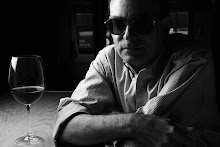Writing briefly about Susannah York in Duffy reminds me that perhaps the time has come for an artistic reassessment of her career, at least that part of her career during which she had the greatest impact--the 1960s. Although Julie Christie will forever be remembed as the English It girl of that decade, beginning with her debut performance in John Schlessinger's Billy Liar and ending with her co-starring role opposite Warren Beatty in Robert Altman's McCabe and Mrs. Miller, in which she played a bawdy house madame with a thick Cockney accent, it is Susannah York whose gentle presence lingers in the mind.
But although she may have been overshadowed by Julie Christie, Susannah York left her own indelible mark on the sixties, beginning in 1960 with her role as Alec Guinness' daughter in Ronald Neame's exemplary Tunes of Glory, based on James Kennaway's novel about post-war life in a Scottish military regiment. Her next notable role was appearing opposite Albert Finney in Tom Jones (1963) as the eponymous hero's love interest, Sophie Western. In both movies (and in her subsequent ones as well), Susannah York's beauty is matched only by her grace and intelligence, qualities that would take the more earthy and ambitious Julie Christie a lifetime to acquire (see her role as an Alzheimer's patient in Away from Her). In 1966, Susannah York appeared opposite a pre-Bonnie and Clyde Warren Beatty in the caper film, Kaleidoscope. Two years later, in 1968, Susannah York starrred alongside Dirk Bogarde in one of the most entertaining--and little seen--romantic films of the decade--Sebastian.
Bogarde is Sebastian, an Oxford don who presides over a government cipher-breaking unit. The gimmick here is that the unit is made up entirely of women. Susannah York becomes his latest recruit. She also goes on to become his lover. Except for some unnecessary slapping late in the story, this is a movie in which romance and intelligence stroll hand in hand. The movie is filled with the sights and sounds of London at its swinging sixties best. And only the opening scene of Richard Lester's The Knack and How to Get It (1964), in which we follow a line of identically dressed "birds" to the apartment of the building's resident rake, can match the visual panache of the scene in Sebastian in which we watch as Susannah York follows Bogarde's "birds" on their way to work (to the accompaniment of Jerry Goldsmith's sprightly score). Seldom has mathematics appeared as sexy as it does in Sebastian, thanks to its two well-matched leads.
Susannah York ended the decade, appropriately enough, with an Academy Award nomination for her turn as Gloria, the desperate actress turned dance marathon contestant, in Sydney Pollock's They Shoot Horses, Don't They? (1969). Jane Fonda was the lead actress, of course, and was also nominated for an Academy Aweard. Neither actress won, but Susannah York was surely recognized for the kind of scene Academy members love--her fully-clothed mental breakdown in the shower room. Gig Young, as the corrupt marathon Emcee, talks her down, and won a Best Supporting Oscar for the role of a lifetime. But it is not Susannah York's mad scene for which I will always remember her. It is the final shot of Susannah York and Dirk Bogarde--listening to some celestial music made up of satellite bleeps as they work together to try and crack the Soviet's newest Cold War code. Now that is mad hot!
Friday, October 17, 2008
Subscribe to:
Post Comments (Atom)

No comments:
Post a Comment